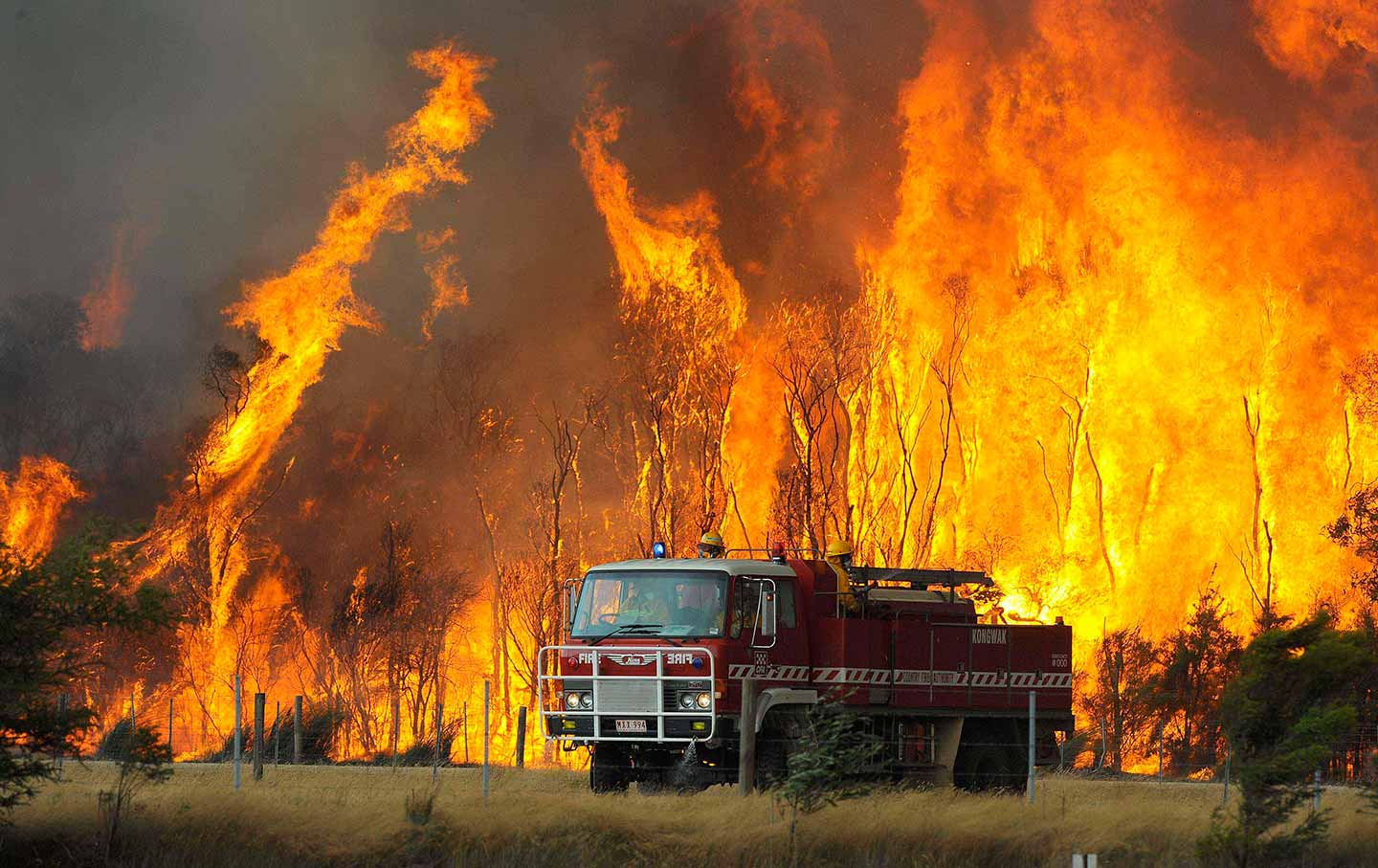Press Release: December 7, 2020
Over the past decade leading civil services firm GRT has helped authorities in their recovery efforts from major natural disasters. Its investment in R&D and staff training for products and services originally designed for the resources sectors were found to be highly applicable in situations requiring the management of air pollution and provision of soil stabilisation to prevent further harm to the environment and the communities where the disasters occurred. This experience was further showcased in the recovery efforts following the historic 2019/2020 Australian bushfires.
For Australian headquartered civil services firm Global Road Technology (GRT) large-scale disaster recovery is something that they’ve unfortunately become accustomed to over the past 10 years.
Following the 2019/2020 bushfire season that stands as the country’s worst-ever in terms of the total loss of life – human and animal –homes and land the business had to draw on every single shred of experience to help the recovery efforts in the country during the midst of the global COVID-19 pandemic. This experience has been built over the past 10 years as the firm played key roles in assisting the recovery efforts of major natural disasters in both Australia and in New Zealand ranging from fires, flooding, and earthquakes.
GRT General Manager, Daniel Grundy, who was involved in the management of emergency response and reconstruction during Queensland’s Summer of Natural Disaster 2010/11, outlined that disaster recovery at any time is a massive challenge, but the complications created by the pandemic certainly exacerbated the standard obstacles presented to them during their most recent experiences.
Are environmental regulations, health and safety concerns or potential profit loss a concern right now?
“GRT provided expertise, product (GRT: Enviro-Binder) and specialist equipment for the bushfire clean-up in NSW via the major contractor – Laing O’Rourke – due to the experience we’ve garnered assisting in the recovery of major crises like the Christchurch earthquake, the 2018 Nelson Bushfires, and hazardous dust and erosion control generally,” said Mr Grundy.

“A further challenge for us during the recovery efforts was the concurrent pandemic where the standard contractor support and training, as well as communication tools – community forums, one-on-one sessions with impacted land-owners,– were not able to be conducted as per usual.. Complicating things further is the time-critical nature of our work particularly where it relates to the ‘capping’ stockpiles of hazardous materials often requires our work to be completed quickly to avoid any further site contamination or pollution – as such we adapted to employ digital tools to reach our stakeholders and industry partners in a timely manner to facilitate and expedite recovery efforts.”
The work GRT completed as part of the bushfire rebuilding efforts builds on its experience drawn from both the Nelson Bushfires and Christchurch earthquakes where its expertise was expanded via its role in managing hazardous dust, erosion and ‘sealing’ burnt out or condemned properties. This occurred during and after the recovery work for the purpose of protecting other recovery workers and along with neighbouring communities from hazardous dust exposure – which is a major risk factor due to the sometimes-high toxicity present in building rubble.
This work is critical as part of rebuilding efforts as it protects impacted communities from further harm caused not only from land slips due to eroded land but also from airborne dust particulates from the houses, sheds, and other buildings destroyed during these events. Common household, farming and yard maintenance products such as pool chemicals, fuels and oils, paints, solvents, plastics, metals, treated timber, not to mention older building materials such as asbestos roofing, cladding and fencing can become harmful residues when added to the ash and soot – a major issue that GRT products like GRT: Rubble-Loc and GRT: Enviro-Binder are designed to specifically address.
For Daniel Grundy, the experience GRT has built from these projects have built on its existing expertise in soil and site stabilisation drawn from years working in the mining, agricultural and civil infrastructure sectors and provided it a with a unique skill-set that allows the business to work quickly and safely when aiding in disaster recovery.

“Our ability to manage the release of hazardous dust during clean-up efforts allows us to seamlessly slot into the larger disaster recovery efforts as we enable other contractors to then quickly and safely complete their jobs – preventing further environmental damage and potential harm to human lives,” Mr Grundy said.
“This expertise has grown from our experienced staff and our work in managing air-pollution from mining and quarrying sites and our expertise in working on large-scale projects such as the expansion of Brisbane airport and then applying it in disaster recovery. The positive element from our end is that our investment in R & D to develop robust, flexible products as well as cutting edge equipment such as our unique polymer pumps or dosing stations are now able to be applied to uses that benefit the wider community – helping communities recover from major natural disasters by playing our role so authorities can deliver assistance in a safe and timely manner.”
Your feedback is important to us. If you enjoyed reading this Global Road Technology industry update and found it informative, please let us know by leaving a REVIEW.
Troy Adams
Troy Adams is the Managing Director of Global Road Technology (GRT) Specialising in Engineered Solutions for Dust Suppression, Erosion Control, Soil Stabilisation and Water Management. A pioneering, socially conscious Australian entrepreneur, Troy Adams is passionate about health and safety and providing innovative solutions that are cost-effective to the mining industry, governments and infrastructure sectors. Troy is also a tech investor, director of companies like Crossware, Boost, Hakkasan, Novikov and more.
MORE INDUSTRY ARTICLES
Nothing found.